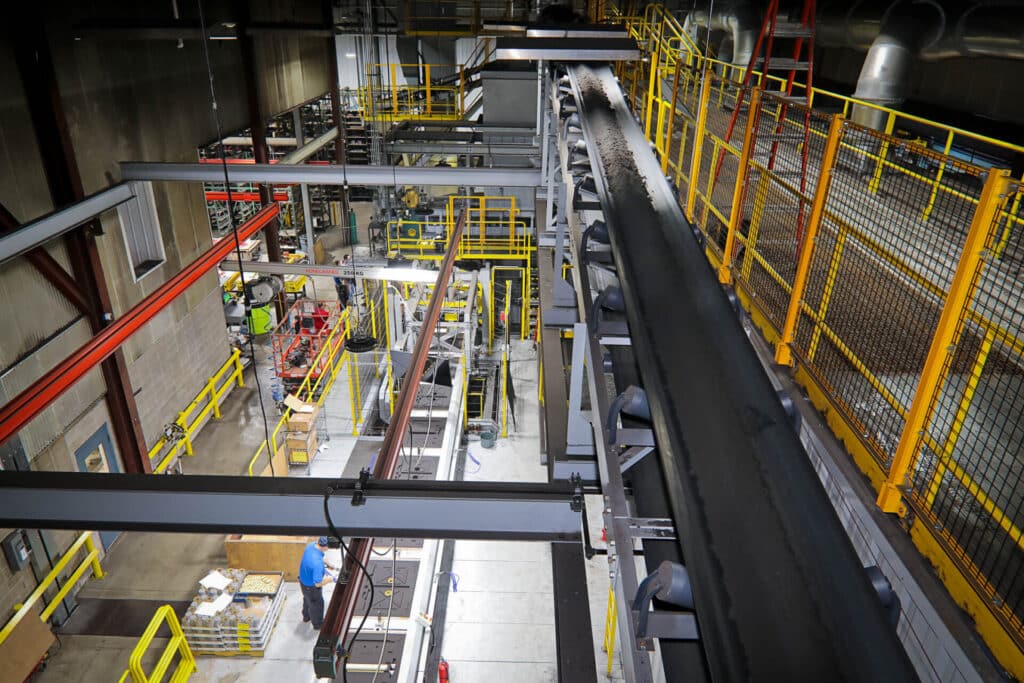
2024 Industrial Construction Outlook
A tale of two trends
The industrial sector outlook for 2024 suggests a story of contrasting trends —where the warehouse and manufacturing landscapes diverge, each charting its own course in response to evolving economic and technological demands. On one hand, the warehouse sector, having ridden the wave of unprecedented demand, is now settling into a more balanced state. Conversely, the manufacturing arena, driven by technological advances and a push toward domestic production, is gearing up for robust expansion. These two distinct narratives within the industrial world highlight a year of adaptation and progress, marked by selective warehousing growth and a tech-driven manufacturing surge. It’s a sector in flux but full of opportunity.
Industrial construction for warehouses slowing
The outlook for the warehouse sector in 2024 indicates a shift from the heightened demand seen in previous years. Warehouse supply has now started to meet the previously unmet demand for space. As a result, the scarcity of warehouse space we saw in 2023 is gradually resolving, leading to a more balanced market.
Despite the increased supply, however, certain areas may still experience pockets of high demand for warehouse space. The warehouse investment landscape is normalizing, with opportunities becoming more selective compared to the peak investment surge we witnessed in earlier years. This shift marks a transition from a period of intense growth to a more stabilized market for 2024.
Manufacturing construction growing in 2024
The manufacturing industry looks promising, driven by sustained high starts and an emphasis on advanced technology. After a significant increase in 2022 and a slight dip in 2023, experts expect manufacturing starts will rise again by 16% in 2024. This trend is largely fueled by the demand for new manufacturing facilities aligning with U.S. industrial policies and infrastructure investments.
Labor availability remains a challenge, necessitating automation and technology integration to offset labor shortages. The sector’s growth indicates a strong demand for advanced manufacturing capabilities, reflecting continued movement in reshoring operations and the need for large-scale manufacturing plants. The focus on high-tech manufacturing underscores the industry’s evolution toward more sophisticated and automated production processes, aligning with broader economic and technological trends.
Industrial construction in manufacturing focus areas
Manufacturing starts in 2024 will likely focus on several key areas:
- Semiconductor Production — With the CHIPS Act and other industrial policies, we’re seeing a significant push toward expanding domestic semiconductor manufacturing capacity.
- Electric Vehicle Battery Production — As the electric vehicle market grows, there’s a corresponding increase in demand for battery manufacturing facilities.
- Advanced Technology and Automation — Manufacturing is moving toward greater automation, including robotics and AI-driven processes, to address labor shortages.
- Sustainable Manufacturing — Emphasizing energy-efficient processes and sustainable materials, reflecting the broader shift toward eco-friendly practices in industry and corporate commitments to carbon neutrality.
- Reshoring of Operations — Companies are increasingly moving manufacturing back to the U.S. to mitigate supply chain risks, requiring new or expanded facilities.
- Pharmaceuticals and Biotech — Expansion in these sectors continues, driven by ongoing healthcare needs and technological advancements.
This diverse range of manufacturing needs reflects the industry’s adaptation to modern technological, economic, and environmental challenges, indicating a dynamic and evolving sector for 2024.
For industrial construction projects
Design and build for:
- Advanced Technology Integration*
- Employee Well-Being
- Flexibility and Scalability
- High-Tech Manufacturing Facilities
- Logistics Efficiency
- Sustainability
*For warehouses, this means robotics, Internet of Things, automation; for manufacturing, it means digital twins, automation, AI-driven analytics.
If you’re thinking about designing and building an industrial facility, be sure to contact us to see how we can help optimize ROI from concept to completion.